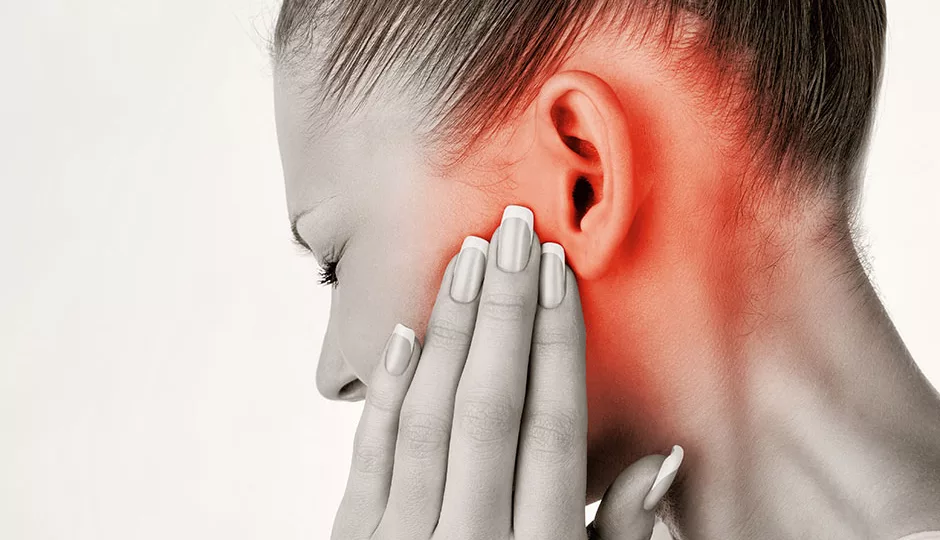
In the realm of orofacial pain disorders, temporomandibular joint (TMJ) pain stands out as a prevalent and often debilitating condition affecting millions worldwide. As a leading expert in TMJ treatment, Dr. Nojan Bakhtiari recognizes the multifaceted nature of this disorder, where understanding the various types of pain is paramount to accurate diagnosis and effective management. In this comprehensive guide, we delve into the most common types of TMJ pain, shedding light on their quality, frequency, duration, and factors that alleviate or aggravate them.
Quality, Frequency, and Duration: Key Parameters in TMJ Pain Assessment
When patients present with TMJ-related symptoms, assessing the quality, frequency, and duration of pain serves as the cornerstone of diagnosis and treatment planning. Understanding these parameters provides valuable insights into the underlying mechanisms and guides tailored therapeutic interventions.
Muscular & Skeletal Pain: Unveiling the Diverse Spectrum
Muscular and skeletal pain constitute a significant portion of TMJ-related discomfort, manifesting in various forms that range from dull, aching sensations to sharp, stabbing pains. Patients often describe these sensations as pressure, tightness, or stiffness, reflecting the complex interplay of muscle tension and joint dysfunction.
Dull, Aching Pain: One of the most common complaints among TMJ sufferers, dull and aching pain typically persists over time, often waxing and waning in intensity. This type of pain may indicate underlying muscle tension or inflammation within the temporomandibular joint.
Pressure and Tightness: Many individuals with TMJ disorders experience a sensation of pressure or tightness around the jaw joint and surrounding muscles. This discomfort may result from muscular overactivity or joint misalignment, highlighting the importance of addressing both muscular and skeletal components in treatment.
Sharp, Stabbing Sensations: In some cases, TMJ pain manifests as sharp, stabbing sensations, particularly during movements such as chewing or yawning. These acute episodes of pain often stem from joint derangement or injury, necessitating prompt evaluation and intervention by a TMJ specialist like Dr. Nojan Bakhtiari.
Nerve Pain: Exploring the Neural Pathways
Beyond muscular and skeletal factors, nerve pain plays a pivotal role in the pathophysiology of TMJ disorders, contributing to a diverse array of sensory experiences ranging from throbbing to electric sensations.
Throbbing Pain: Throbbing pain, characterized by rhythmic pulsations or sensations of pressure, may signify nerve irritation or compression within the temporomandibular region. Patients often describe this type of pain as persistent and deeply uncomfortable, warranting thorough evaluation by a TMJ specialist to identify the underlying cause.
Electric and Pounding Sensations: Nerve-related pain in the context of TMJ disorders can also manifest as electric or pounding sensations, eliciting feelings of tingling or numbness in addition to discomfort. These sensations may arise from nerve entrapment or inflammation, underscoring the need for comprehensive diagnostic assessment and targeted interventions.
Itchy and Burning Sensations: In rare instances, patients with TMJ disorders may experience unusual sensations such as itchiness or burning in the jaw area. While less common than other types of nerve-related pain, these symptoms can significantly impact quality of life and may signal underlying neurogenic inflammation or neuropathy.
Alleviating and Aggravating Factors: Clues to Diagnosis
In the diagnostic evaluation of TMJ pain, identifying factors that alleviate or aggravate symptoms provides valuable clues to the underlying etiology and informs treatment strategies. Patients often report specific triggers or activities that either alleviate discomfort or exacerbate pain, offering valuable insights into the mechanisms driving their symptoms.
Alleviating Factors: Certain behaviors or interventions may provide temporary relief from TMJ-related pain, offering valuable respite for affected individuals. For instance, applying heat or cold packs to the jaw area, practicing relaxation techniques, or avoiding hard or chewy foods can help alleviate muscular tension and reduce discomfort.
Aggravating Factors: Conversely, certain actions or habits may exacerbate TMJ symptoms, exacerbating pain and dysfunction. Activities such as excessive jaw clenching, teeth grinding (bruxism), or chewing gum can place undue stress on the temporomandibular joint, worsening existing pathology and prolonging recovery.
Conclusion
In conclusion, TMJ pain encompasses a diverse spectrum of sensations, ranging from muscular and skeletal discomfort to nerve-related sensations. By carefully assessing the quality, frequency, and duration of pain, along with identifying alleviating and aggravating factors, TMJ specialists like Dr. Nojan Bakhtiari can formulate tailored treatment plans that address the unique needs of each patient.
As the landscape of TMJ treatment continues to evolve, ongoing research and clinical advancements promise to further enhance our understanding and management of this complex disorder. By staying abreast of emerging evidence and leveraging innovative approaches, TMJ specialists like Dr. Nojan Bakhtiari can offer hope and relief to those affected by TMJ-related pain, fostering improved outcomes and well-being for patients in New York City. Book Your Appointment Now with Dr. Nojan!

